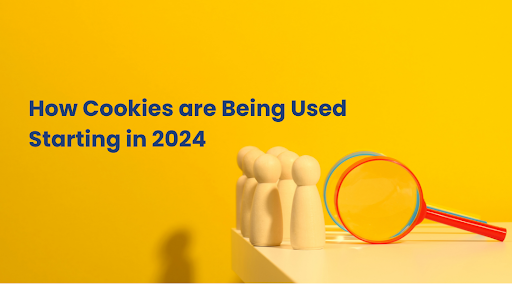There’s been a lot of talk recently about Google phasing out its third-party cookies, and many business owners are reasonably unsure of how to effectively collect customer data for marketing purposes in this new cookie-free world. It will most certainly be a season full of change, but innovative marketing companies, like Dedicated Designs, are already exploring ways to help businesses continue to gather and use customer data effectively without relying on third-party cookies.
While there will, no doubt, be a steep learning curve as the new system from Google called Privacy Sandbox is rolled out, our hard-working team at Dedicated Designs is committed to staying up-to-date with the latest opportunities to help our clients’ companies succeed and continue to reach their target audience.
Before thinking about new ways to gather and use data from customers, it’s important for businesses to understand what exactly is being eliminated in the current system, and what will remain.
The Elimination of Third-Party Cookies
Google first announced that it was planning to remove third-party cookies in January, 2020, but the change has been happening as a slow rollout in order to make sure the new Privacy Sandbox initiative is ready to replace them.
Third-party cookies, which collect data using a script, are typically utilized to collect consumer data in order to deliver relevant ads across different sites on the web. These types of cookies are essentially utilized for cross-site ad tracking, so that marketers can garner a wider audience and/or create more specific targeting. These third-party cookies are the specific types of cookies that Google aims to replace with its new technology called Privacy Sandbox.
The Privacy Sandbox is promoted as a less intrusive option for customers, so that user privacy is better protected while advertisers still have the ability to use target advertising. The slow roll out is necessary in order to make sure that Privacy Sandbox is indeed efficient and fully functional before the current third-party cookies are completely phased out. Privacy Sandbox will be different from the current third-party cookies system because it will not rely on cross site, tracking identifiers, or secret techniques like “fingerprinting.”
What are Some Obstacles in a Cookieless Future?
Business owners and marketing companies face a brand new set of obstacles when it comes to advertising in a post-cookie world, especially since a large percentage of marketing companies and businesses rely on data collected by those third-party cookies. While the world is still learning how Google’s new Privacy Sandbox initiative will compare in its ability to target customers, we are confident that Dedicated Designs will be able to navigate these challenges.
What are the Most Common Challenges?
Personalization Will be More Challenging:
Because the primary use of third-party cookies was to gather consumer data in order to personalize user experience and advertising, personalization may become more difficult. With less cross-site data describing user preferences and behaviors, it may be more challenging, though not impossible, to predict how customers will interact with websites or advertisements.
Specific Audience Targeting May be Less Reliable:
Since current marketing strategies are primarily data-driven, data is obviously an essential ingredient to identify the target audience of any company. Not only that, but it is important in order to increase customer conversions and improve ROI in marketing. After third-party cookies are eliminated, business owners and marketing companies will need to work together even harder to effectively identify their target audience and collect data about their preferences and interests.
One way Google will be assisting with this challenge is through Federated Learning of Cohorts (FLOC). FLOCs will be able to collect user information about borrowing habits and place them in categories to demonstrate their particular interest to advertisers, and while this will be beneficial, it will likely not be as reliable, especially at first, when compared to using third-party cookies.
Third-Party Audiences Will Dwindle:
When Google eliminates third-party cookies, the information saved will eventually expire and will no longer be usable by marketers and companies. This means it is essential to work with professionals to develop a solid plan to collect data from your target audience and generate prospects moving forward. Not only will that data need to be collected, but aggregated as well, using tools and methods that work best for each industry.
What Is a Future of Marketing Like Without Third-Party Cookies?
There are other tools besides cookies that websites can use to collect and analyze customer data, and our reliable team and Dedicated Designs can help you understand where to invest your time and effort as your company moves forward into a cookieless future.
A company’s own sources can provide adequate data and valuable insights to predict user behavior, and we highly recommend shifting the focus toward a zero party data and first party data strategy.
What is Zero Party Data?
Zero party data is data that customers and clients willingly and intentionally share with a company. Consumers who share data with your business, enable you to collect this “zero party data.” This gives consumers a sense of security since they are the ones in control of what data they share.
Zero Party Data Examples
Zero party data typically includes things like name, phone number, and email address, in exchange for a specific coupon or a customized offer that the customer receives. Customer intent is obvious here since zero party data is obtained directly from the source, and there is transparency involved that is helpful in building trust.
What is First-Party Data?
First party data is also going to be essential to collect in a post-cookie world; this means data that is gathered passively when a user interacts with your company. The business can collect and own information about their own clients by using software and other systems, owned by the business itself. You are essentially gathering your own data about your consumers without outsourcing it to a third-party.
First Party Data Examples
Common first party data examples are interests of your customers, their behavior, user interactions, email engagement, customer feedback responses, purchase history, and activity across devices.
How to Collect First Party Data
Your social network sites, app, and or website can generate this type of first party data, and your brand will control everything. This means that as long as you are serious about protecting customer privacy, data should remain secure and usable.
Step Up Your Email Marketing Campaigns:
Email marketing is often not given the praise it deserves as a first party data strategy. The research shows that it does in fact, have an ROI of $36 for every $1 spent, so it is a valuable investment in terms of time and money, and first party data allows you to track customer email engagement!
How can Dedicated Designs Help During this Transition?
Dedicated Designs can help improve your business’s marketing tactics and streamline your email marketing campaigns, so that you can cultivate customer relationships and communicate effectively. With buttons and options built into a newsletter campaign, you can collect the customer data yourself. You can even create and select separate audiences to design a more personalized experience for your target audience.
Our entire staff here at Dedicated Designs is ready and willing to help your business transition successfully as third-party cookies begin to vanish. Call us at (916) 243-5003 or fill out our online form and one of our team members will get back to you soon.




